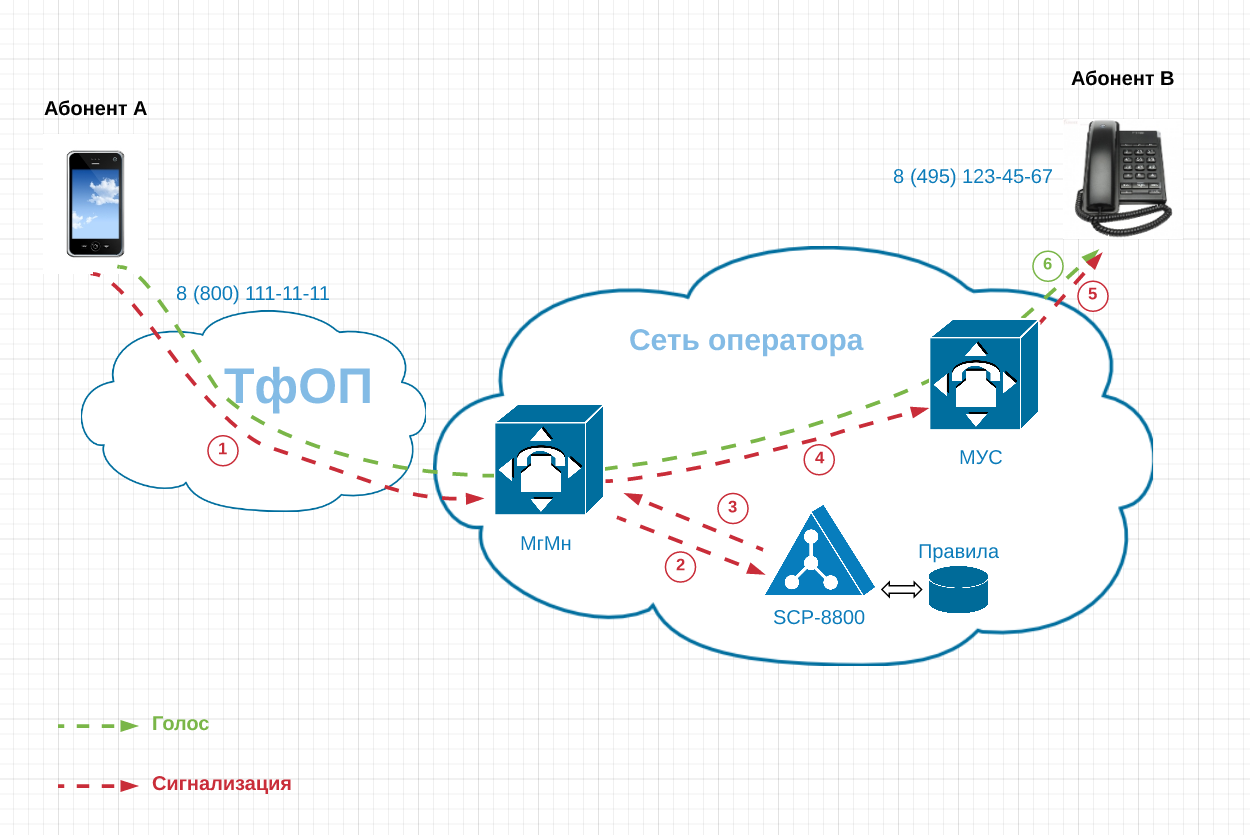Short and simple about the complex - the service "8-800" (Freephone)

The service "8-800" or "free call" or Freephone (Toll-free) is known to everyone. We often choose the 800th series number to call, knowing that this call will be free for us.
But how does it work?
Those who wish to read in more detail about the history of the emergence and development of the 8-800 service, I dare to send it to Wikipedia or, even better, to the classic edition of B. S. Goldstein and others. “Intelligent networks” .
And we will try to briefly and simply figure out how this service works.
First of all, let me formulate the essence of the “8-800” service as a “call forwarding service." This means that the numbers 8-800, in fact, do not exist - they are virtual. All calls to numbers 8-800 are forwarded to real landline or mobile numbers. This is similar to a domain name system, when each text entry of the form, for example, “www.name.ru” corresponds to a specific IP address of the server.
In the recent past, this was implemented by simply substituting a forwarding pair on the MGMn switch, for example, as follows (simplified):
78001111111 → 74951234567
This means that all calls to the number 8 (800) 111-11-11 will be unconditionally redirected to the number 8 (495) 123-45-67. However, today it is rare that anyone does this. Such a scheme is difficult to implement and support - after all, there is more than one MGMn switch for each operator. This is a whole network and not infrequently of heterogeneous equipment; each switch had to be configured manually.
Today, the so-called “intelligent call forwarding” rules the ball. “Intelligent” means call forwarding depending on the conditions. As a condition of call forwarding, you can use the day of the week, time of day, membership of the called subscriber in a certain region, congestion of call forwarding numbers, and much more. In order to analyze these conditions and select the necessary call forwarding number, a separate telecommunication server is usually used - SCP ( Service Control Point in IN SS7 terminology). This server receives call routing requests from a MGMn switch to a specific number 8-800 and, in response, after analyzing the conditions, returns the destination call forwarding number for each case. Consider an example of a call to the number 8-800 on a simplified diagram.

Subscriber A dials 8 (800) 111-11-11. The call through the PSTN enters the MGMn switch operator (1). The switch requests the SCP 8800 server about the call routing number (2). The SCP 8800 server finds in the rule database the necessary call forwarding number (the same pair 78001111111-74951234567), additionally checking the various conditions (if they were specified) and reports the call forwarding number to the switch (3). The MgMn switch finds the MUSC to establish a call (4). The ICC establishes a call to number 8 (495) 123-45-67. The voice channel is switched off (6). The MSC can also be MSC (mobile switch), if the forwarding number is mobile or SIP-gateway, if the forwarding address is SIP. I repeat once again - the scheme is maximally simplified. Of course, there is also the operator’s network, which owns number A, its mobile, local and MGMn switches.
I propose to consider the rules of intelligent forwarding and practical examples of their use in the next article.
Short vocabulary
PSTN = Public Switched Telephone Network (PSTN )
MgMn switch = Intercity / Intercity People switch
ICC = Local Communication Node (switch)
MgMn switch = Intercity / Intercity People switch
ICC = Local Communication Node (switch)
